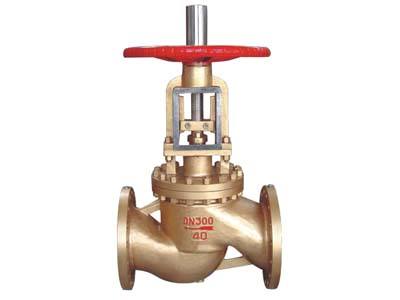How to choose valve for oxygen pipeline?
Oxygen has typically active chemical properties. It is a strong oxidizing and a combustibility substance and can combine with most elements to form oxides except for gold, silver and inert gases such as helium, neon, argon and krypton. An explosion occurs when oxygen is mixed with combustible gases (acetylene, hydrogen, methane, etc.) in a certain proportion or when the pipe valve meets a sudden fire. The oxygen flow in the pipeline system change in the process of oxygen gas transportation, the European Industrial Gas Association (EIGA) developed the standard IGC Doc 13/12E “Oxygen Pipeline and Piping Systems” divided the Oxygen working conditions for “impact” and “non-impact”. The “impact ” is a dangerous occasion because it is easy to stimulate energy, causing combustion and explosion. The oxygen valve is the typical “impact occasion”.
Oxygen valve is a type of special valve designed for oxygen pipeline, has been widely used in metallurgy, petroleum, chemical and other industries involving oxygen. The material of the oxygen valve is limited to working pressure and flow rate to prevent the collision of particles and impurities in the pipeline. Therefore, the engineer should fully consider friction, static electricity, non-metal ignition, possible pollutants (carbon steel surface corrosion) and other factors when selecting oxygen valve.

Why are oxygen valves prone to explode?
- The rust, dust and welding slag in the pipe cause combustion by friction with the valve.
In the process of transportation, the compressed oxygen will rub and collide with oil, iron oxide scrap or small particle combustor (coal powder, carbon particle or organic fiber), resulting in a large amount of friction heat, resulting in the combustion of pipes and equipment, which is related to the type of impurities, particle size and airflow speed. Iron powder is easy to combust with oxygen, and the finer the particle size, the lower the ignition point; The greater the velocity, the easier it is to burn.
- Adiabatically compressed oxygen can ignite combustibles.
The low ignition point materials like oil, rubber in the valve will ignite at a local high temperature. The metal reacts in oxygen, and this oxidation reaction is significantly intensified by increasing the purity and pressure of oxygen. For example, in front of the valve is 15MPa, the temperature is 20℃, the pressure behind the valve is 0.1MPa, if the valve is opened quickly, the oxygen temperature after the valve can reach 553℃ according to the calculation of adiabatic compression formula, which has reached or exceeded the ignition point of some materials.
- The low ignition point of combustibles in high-pressure pure oxygen is the inducement of oxygen valve combustion
The intensity of the oxidation reaction depends on the concentration and pressure of oxygen. The oxidation reaction occurs violently in the pure oxygen, at the same time gives off a large amount of heat, so the oxygen valve in the high-pressure pure oxygen has great potential danger. Tests have shown that the detonation energy of fire is inversely proportional to the square of the pressure, which poses a great threat to the oxygen valve.
The pipes, valve fittings, gaskets and all materials in contact with oxygen in pipelines must be strictly cleaned due to the special properties of oxygen, purged and degreased prior to installation to prevent scrap iron, grease, dust and very small solid particles from being produced or left behind in the manufacturing process. When they are in the oxygen through the valve, easy to cause friction combustion or explosion risk.
How to choose a valve used for oxygen?
Some projects explicitly prohibit gate valves from being used in oxygen pipelines with design pressure greater than 0.1mpa. This is because the sealing surface of gate valves will be damaged by friction in relative motion (i.e. the opening/closing of the valve), which causes small “iron powder particles” to fall off from the sealing surface and easily catch fire. Similarly, the oxygen line of another type of valves will also explode at the moment when the pressure difference between the two sides of the valve is large and the valve opens quickly.
- Valve type
The valve installed in the oxygen pipeline is generally a globe valve, the general flow direction of the valve medium is down in and out, while the oxygen valve is the opposite to ensure a good stem force and the rapid closing of the valve core.
- Valve material
Valve body: It is recommended to use stainless steel under 3MPa; Inconel 625 or Monel 400 alloy steel is used above 3MPa.
- Trim
(1) The valve inner parts shall be treated with Inconel 625 and surface hardening;
(2) Valve stem/sleeve material is Inconel X-750 or Inconel 718;
(3) Should be non-reducing valve and keep the same caliber with the original pipe; Valve core seat is not suitable for hard surfacing welding;
(4) The material of the valve sealing ring is non-grease molded graphite (low carbon content);
(5) Double packing is used for the upper valve cover. The packing is high temperature resistant grease-free graphite (468℃).
(6) Oxygen in the flow of burrs or grooves will produce high-speed friction, which produces the accumulation of a large amount of heat and may explode with carbon compounds, the valve inner surface finish should meet the requirements of ISO 8051-1 Sa2.
More information about the oxygen valve, contact us now!



Leave a Reply
Want to join the discussion?Feel free to contribute!